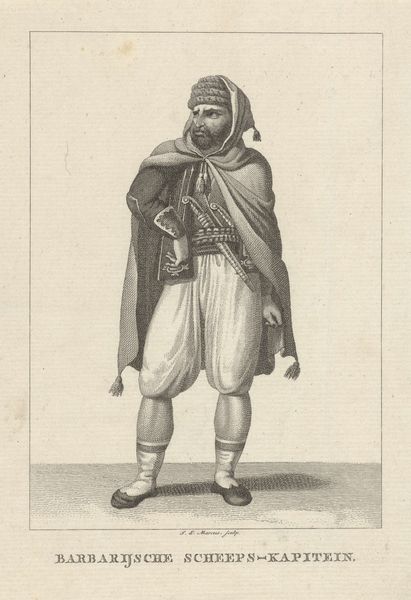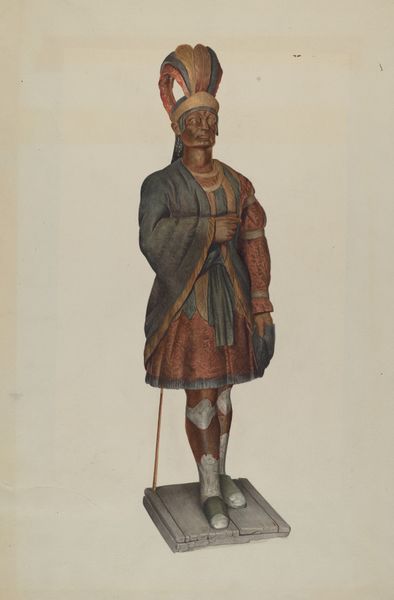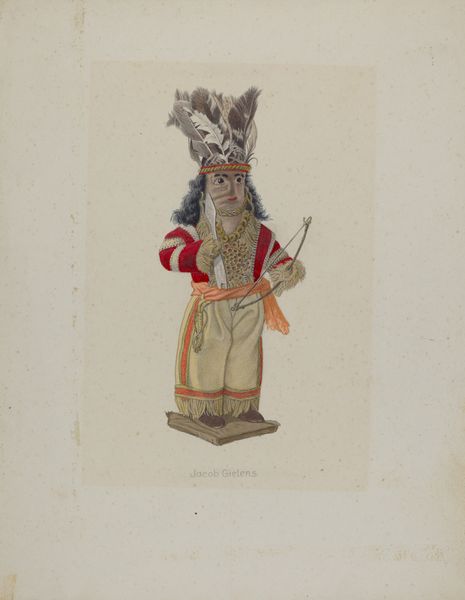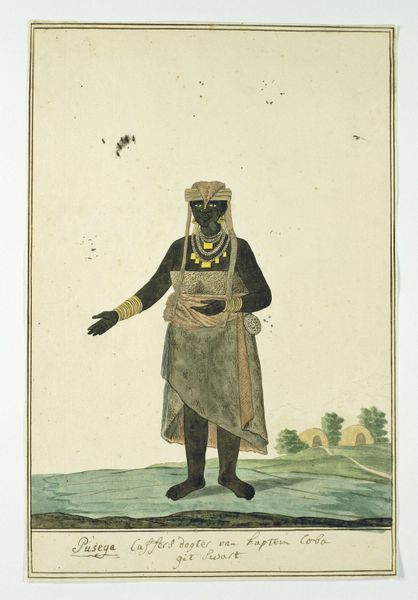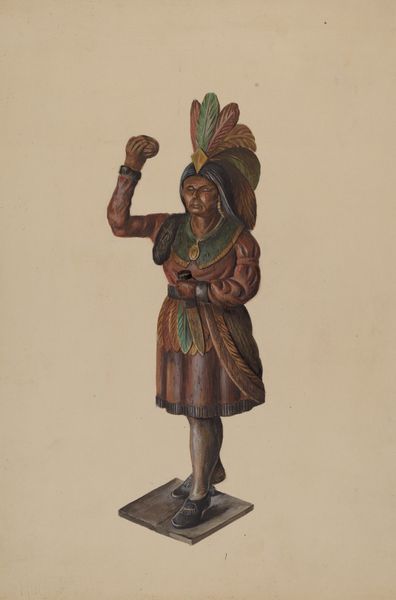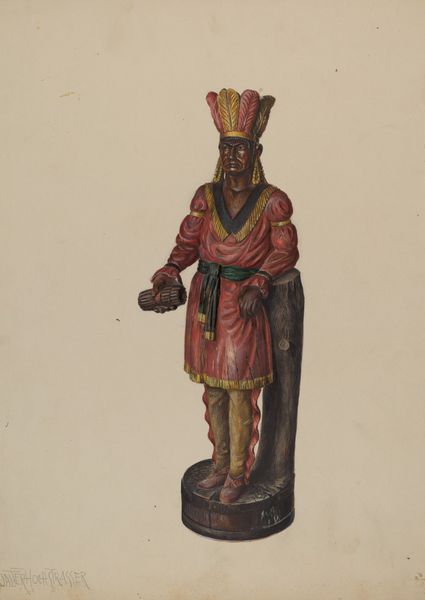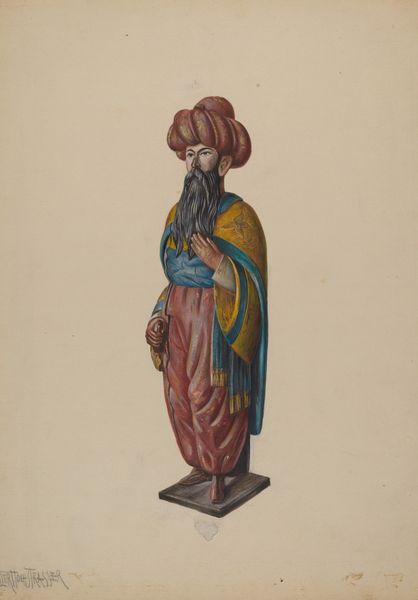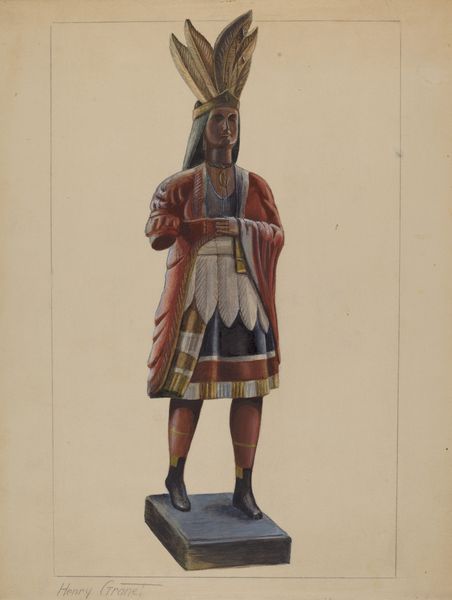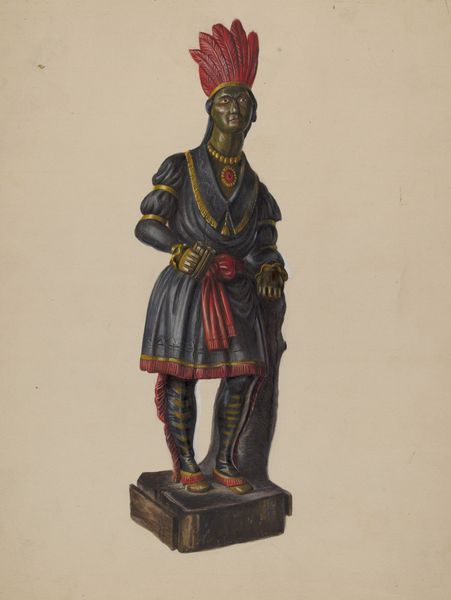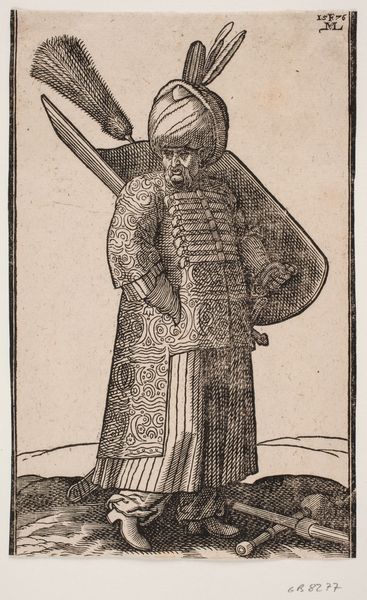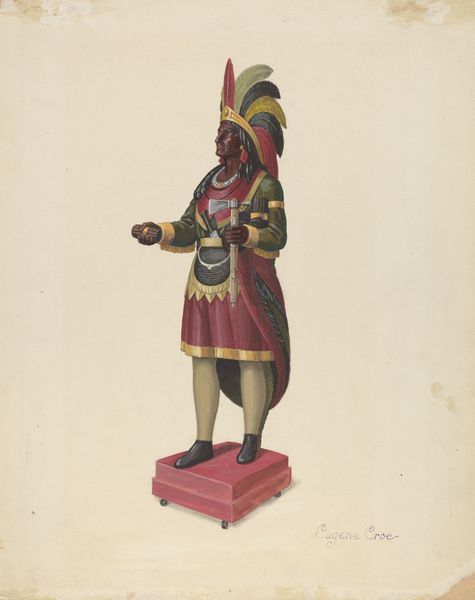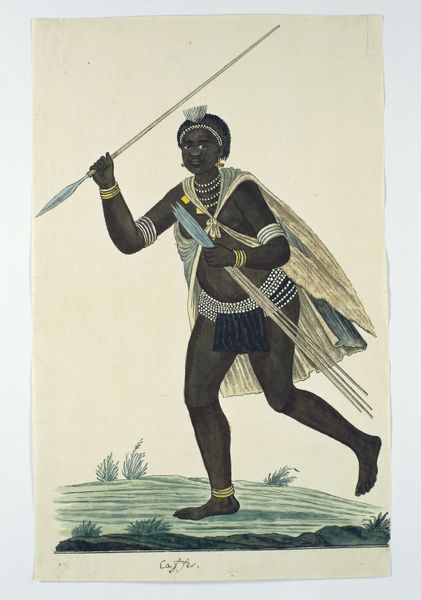
drawing
#
portrait
#
drawing
#
caricature
#
watercolour illustration
Dimensions: height 660 mm, width 480 mm, height 356 mm, width 216 mm, height mm, width mm
Copyright: Rijks Museum: Open Domain
Editor: This is "A Xhosa (possibly Gonaqua) chieftain’s wife with an infant on her back," a watercolor drawing from 1777 by Robert Jacob Gordon. It's striking how directly she gazes at the viewer, but there’s also something distant in her eyes. What strikes you about this piece? Curator: Well, given its context, the first thing that comes to mind is the historical and power dynamic at play. Gordon was a military man and explorer in service of the Dutch East India Company. How do you think this commission reflects the public role of art, specifically in representing colonized peoples? Editor: That’s a great point. I hadn't considered how the artist’s role within the Company might influence the portrayal. It feels like there is an attempt to capture her likeness, but I imagine that what he chose to include or exclude could be used to enforce a certain colonial agenda. Curator: Exactly. Think about the visual composition. What stands out besides the direct gaze? Consider her adornments and their meticulous rendering, and then juxtapose it against the minimalist background. What does that emphasize for you? Editor: I see what you mean. The attention to detail on her attire and jewelry really brings them to the forefront. Maybe Gordon's trying to emphasize material wealth or, potentially, otherness by contrasting these very specific details against a relatively sparse background? Almost like an anthropological record. Curator: Precisely. These depictions, presented as objective observations, were circulated to inform and reinforce European perceptions of indigenous populations. So this begs the question: how do such images contribute to the construction of cultural identity within the colonial framework? Editor: That’s… heavier than I initially thought. Now I see it's not just a portrait; it’s a statement about power and representation. Curator: Indeed. Art rarely exists in a vacuum. Understanding its historical context is crucial. Editor: Thanks, I will keep that in mind in the future. This was an incredibly insightful perspective.
Comments
No comments
Be the first to comment and join the conversation on the ultimate creative platform.
